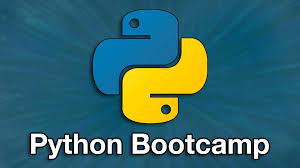Python Bootcamp Introduction:
Python, with its versatility and wide range of applications, has become one of the most popular programming languages in the world. Joining a Python Bootcamp is an excellent way to gain comprehensive skills and practical experience. In this article, we’ll guide you through the steps to obtain a certificate in a Python Bootcamp, setting you on a journey toward becoming a proficient Python developer.
- Choosing the Right Python Bootcamp:
- Research: Explore various Python Bootcamps available online or in your local area. Consider factors such as curriculum, duration, instructor credentials, reviews, and cost.
- Curriculum Evaluation: Examine the course syllabus to ensure it covers essential Python concepts, libraries, frameworks, and real-world projects.
- Enrolling in the Bootcamp:
- Registration: Once you’ve found a suitable Bootcamp, sign up and create an account on the respective platform.
- Payment: Depending on the Bootcamp, there might be a fee associated with enrollment. Some platforms offer financial aid or installment options.
- Navigating the Curriculum:
- Comprehensive Learning: Engage actively with the course materials, including video lectures, reading assignments, coding exercises, and projects.
- Hands-On Practice: Python is best learned through hands-on practice. Complete coding assignments, quizzes, and challenges to reinforce your understanding.
- Participating in Projects:
- Real-World Projects: Many Python Bootcamps emphasize project-based learning. Participate in projects that simulate real-world scenarios to apply your skills.
- Collaboration: Collaborate with fellow learners on group projects to gain exposure to teamwork and version control using tools like Git.
- Attending Webinars and Discussions:
- Live Sessions: Some Bootcamps offer live webinars, workshops, and Q&A sessions where you can interact with instructors, ask questions, and clarify doubts.
- Discussion Forums: Participate actively in online forums to discuss concepts, share insights, and seek help from instructors and peers.
- Completing Assessments and Quizzes:
- Skill Validation: Periodic assessments and quizzes help gauge your progress and understanding of Python concepts.
- Feedback: Use feedback from assessments to identify areas for improvement and concentrate on reinforcing weak points.
- Capstone Project:
- Culmination of Learning: Many Python Bootcamps culminate in a capstone project that allows you to showcase your skills. Choose a project that aligns with your interests and demonstrates your proficiency.
- Peer and Instructor Feedback:
- Peer Review: Provide constructive feedback to peers on their projects, and receive valuable insights in return.
- Instructor Guidance: Reach out to instructors for clarification on complex topics or project-related challenges.
- Completing the Bootcamp:
- Fulfillment of Requirements: Ensure you meet all the requirements of the Bootcamp, which may include completing projects, assignments, assessments, and the capstone project.
- Earning the Certificate:
- Certificate Issuance: Once you successfully complete the Bootcamp, you’ll receive a certificate of completion. The certificate may be available for download directly from the platform.
- Showcasing Your Accomplishment:
- Resume and LinkedIn: Add the certificate to your resume and LinkedIn profile to showcase your achievement to potential employers, clients, and colleagues.
Enrolling in a Python Bootcamp is a dynamic way to master the Python programming language and gain hands-on experience. By actively engaging with the curriculum, completing projects, seeking feedback, and successfully fulfilling the Bootcamp’s requirements, you’ll earn a valuable certificate that attests to your dedication and skill. The journey through a Python Bootcamp equips you with the expertise to tackle diverse coding challenges and opens doors to exciting opportunities in the world of programming.














